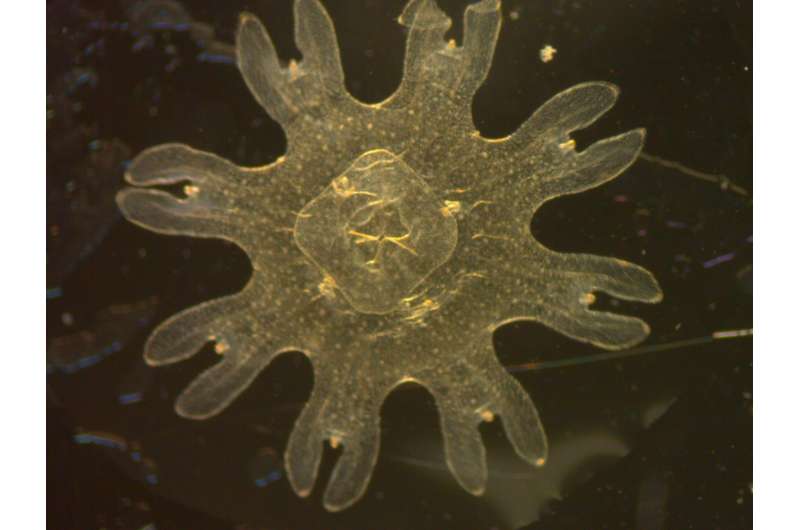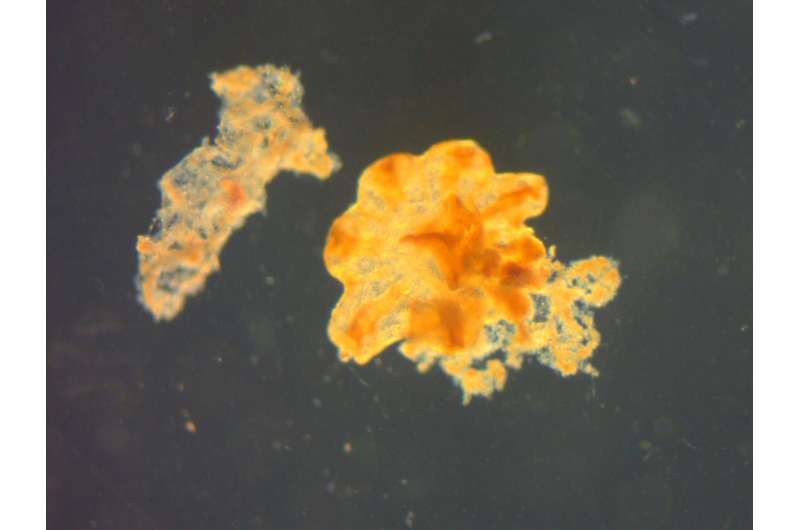Jellyfish become unintended victims of oil spill mitigation

A chemical used to disperse oil following the 2010 Deepwater Horizon oil spill has been proven to severely harm and even kill jellyfish.
A study by Florida International University's Southeast Environmental Research Center found crude oil and weathered oil alone did not cause significant adverse effects in moon jellyfish, a species commonly found in the Gulf of Mexico where the spill occurred. But the crude oil, in the presence of the chemical dispersant Corexit 9500, caused changes in color of the jellyfish, irregularities in their bell shape, tissue degradation and even death. Jellyfish exposed to the dispersant alone also experienced acute toxicity. Corexit 9500 was used in the 2010 spill to disperse oil slicks in the water column.
"The use of dispersant in response to an oil spill is generally regarded as the best option to reduce biological impact and protect shoreline habitats, but it comes with trade-offs," said Gary Rand, co-author of the study and professor in the Department of Earth and Environment at FIU.
The Deepwater Horizon oil spill released millions of gallons of crude oil into the Gulf of Mexico in April 2010. Corexit 9500 was applied by both injection at the source of the oil leak and to the sea surface. According to Rand, its application is critical in preventing significant oiling of sensitive shoreline habitats during an oil spill response.

Toxicity studies conducted in laboratories to examine the biological effects of crude oil, weathered oil and chemical dispersants in marine ecosystems have traditionally used standard test organisms, such as mysid shrimp, and fish, such as inland silversides and sheepshead minnows. The Gulf of Mexico is home to one of the most diverse populations of anemones, corals, and jellyfish in the world with more than 115 species taking up residence in its warm waters. According to the researchers, jellyfish are often overlooked in marine toxicity assessments since their ecological importance is often underestimated.
"The role of jellyfish as consumers and as prey increases the need to understand how exposure to crude oil, weathered oil and dispersants affect this group of organisms," Rand said. "Selecting a variety of animal and plant species native to an ecosystem of interest provides a greater overall understanding of potential risks to the ecosystem."
More information: B.S. Echols, The use of ephyrae of a scyphozoan jellyfish, Aurelia aurita, in the aquatic toxicological assessment of Macondo oils from the Deepwater Horizon incident, Chemosphere (2016). DOI: 10.1016/j.chemosphere.2015.10.082
Journal information: Chemosphere
Provided by Florida International University












.jpg)




